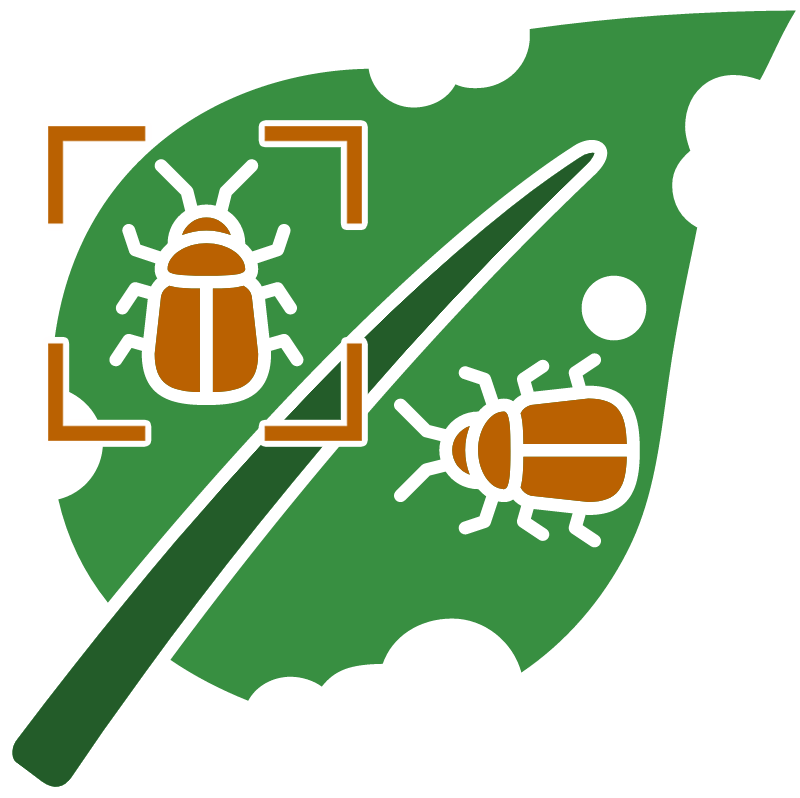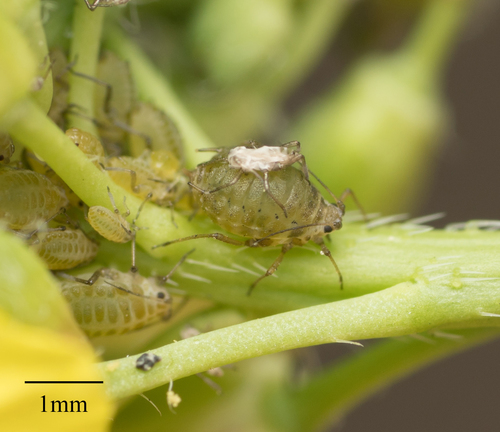Turnip aphid (Lipaphis pseudobrassicae)
Biology and life history: The turnip aphid is a worldwide serious pest of cruciferous crops such as canola, cabbage, broccoli, brussels sprouts, cauliflower, collard, kale, mustard, radish, rape, and turnip as well as weeds such as wild radish, wild turnip, and others. It is a dark to olive to greyish-green colored aphid with dark bars on its abdomen. Except at their base, antennae are also dark. It is a prolific aphid; depending on the climate, it can produce several generations per year. It is usually seen forming dense colonies on crucifer flowers, leaves, and stems during spring and summer. It could have both sexual (production of eggs after fertilization) and asexual (birthing of live female nymphs by adult females without fertilization) reproduction, but the details are unknown for Pacific Northwest populations.
Host plants and crop damage: High densities of turnip aphids can curl, stunt, turn yellow, or kill plants, especially young plants or plant parts. Stunting or contamination of the crop with aphids reduces market values of several leafy greens and cole crops. In addition to its direct damage and contamination, turnip aphid transmits multiple viruses such as Beet western yellows virus, Cauliflower mosaic virus and Turnip mosaic virus that also contribute to yield losses. The honeydew produced by this aphid facilitates the growth of sooty fungus, reducing the marketability of crops.
Management: Low turnip aphid populations may not need any management actions, especially if they are colonizing older or nonmarketable leaves. Natural enemies such as lady beetles, ground beetles, lacewings, spiders, hover flies, and parasitic wasps regulate these aphids, especially in areas with no insecticide applications. Crop rotation helps break the pest cycle. Insecticidal soaps, oils, and bio-based pesticides may be used to control this aphid. When other methods are not effective, especially when there is a high population of turnip aphids damaging marketability of crops, judicious applications of less toxic narrow-spectrum insecticides can be applied to keep the vegetable free of aphids. Economic thresholds for turnip aphids for canola in the Pacific Northwest has not been developed. Reducing the availability of alternative hosts such as wild radish and wild turnip between growing seasons helps manage the population of turnip aphid. Use of insecticide seed treatments can delay aphid colonization and reduce early infestation, aphid feeding and the spread of viruses.

